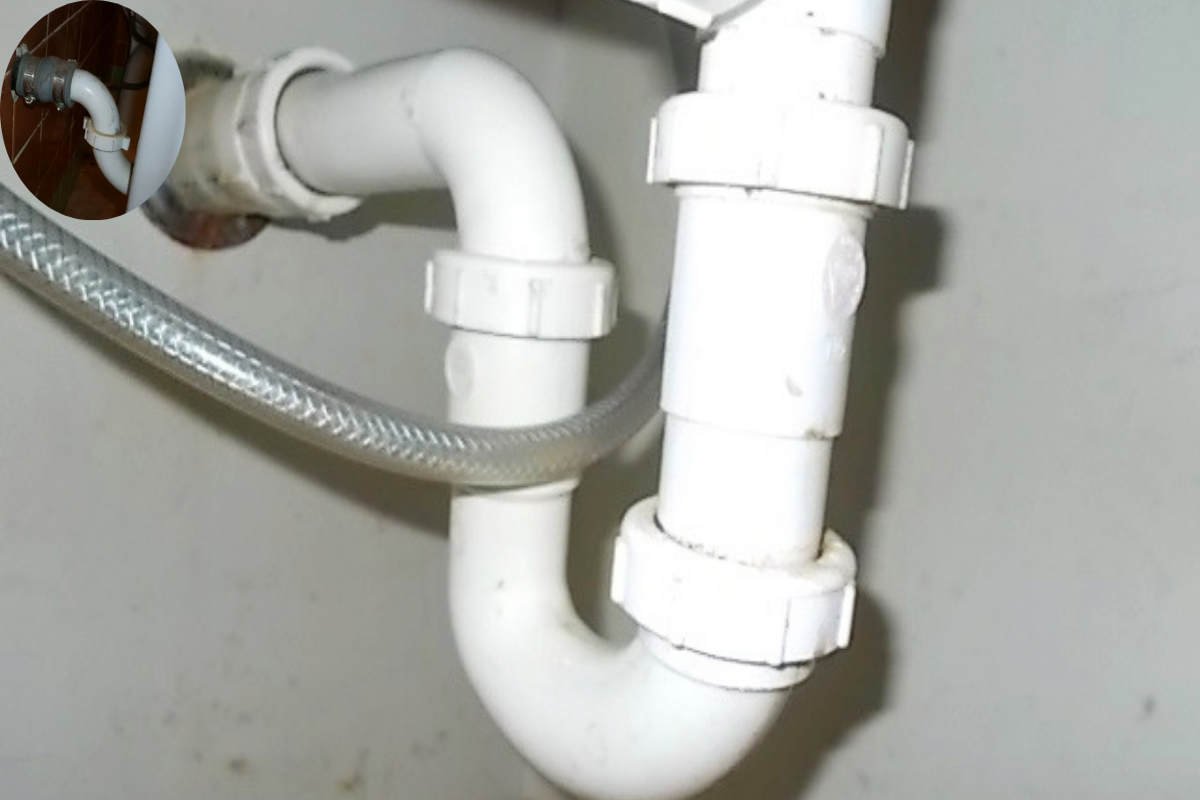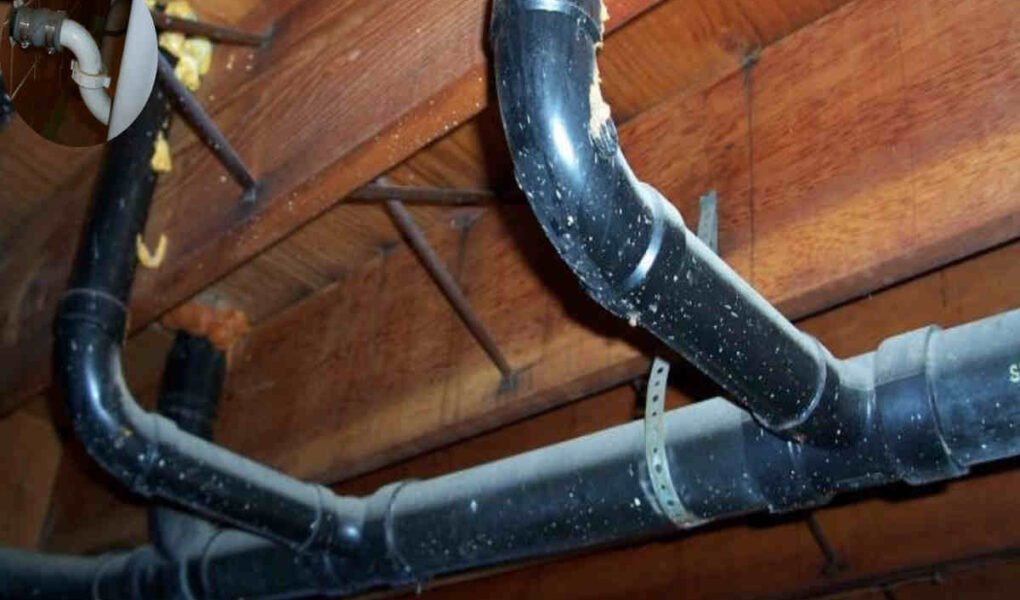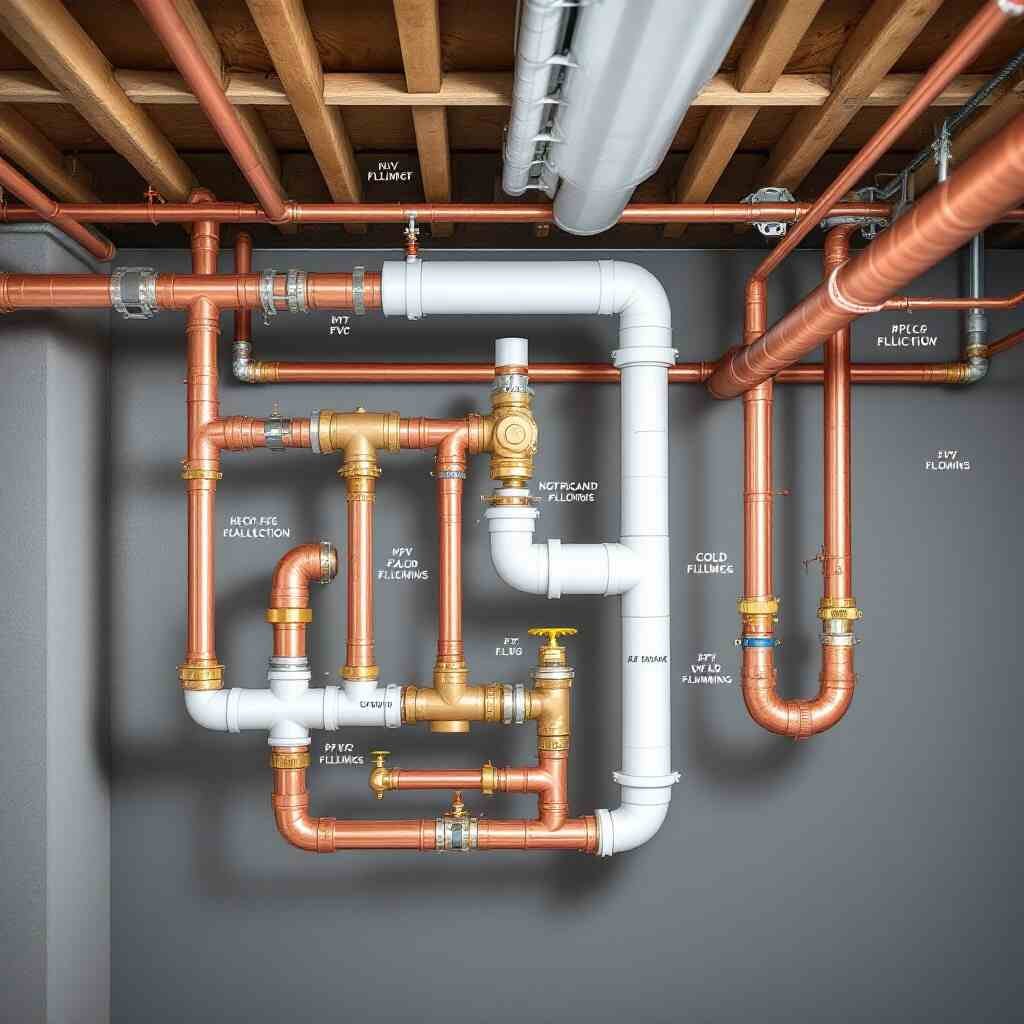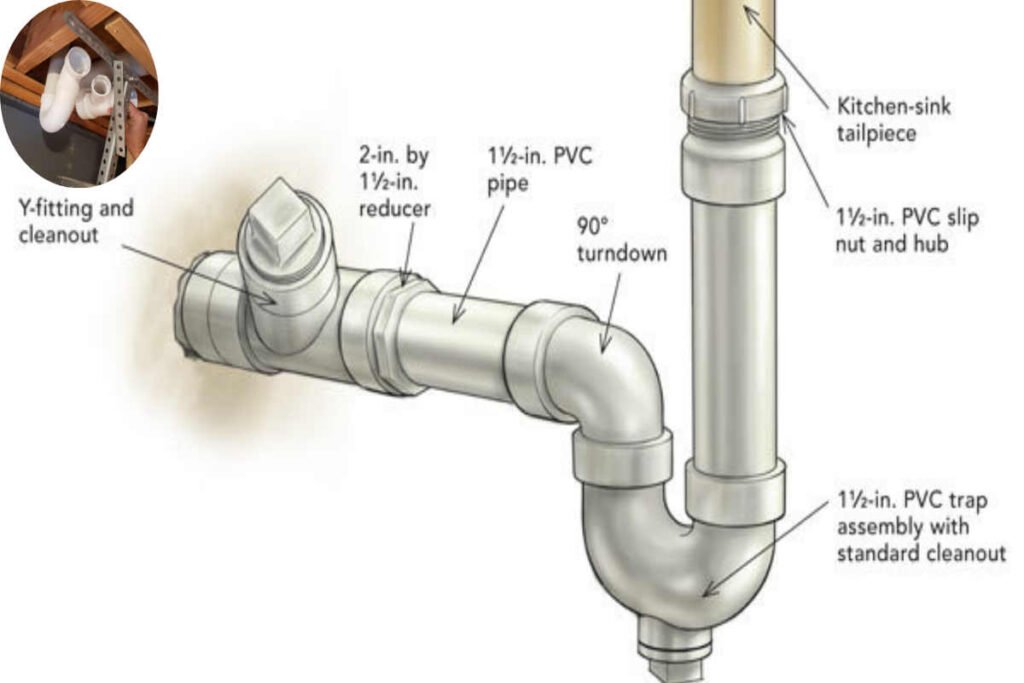Understanding the various components is essential in the intricate world of home plumbing systems. The plumbing system is not just a collection of pipes and fixtures; it is a carefully designed network that ensures water flows smoothly throughout your home. Among the many fittings that play a crucial role in this system, the Santee stands out as an important element.
Understanding Home Plumbing Basics
What Makes Up a Typical Home Plumbing System?
A typical home plumbing system consists of several key components, including:
- Pipes are the pathways through which water flows, transporting it to and from various parts of the house.
- Fittings: These connect different piping sections and facilitate changes in direction or size of the pipes.
- Fixtures: These include sinks, toilets, and faucets, where users interact with the plumbing system.
Key Components: Pipes, Fittings, Fixtures, and Their Roles
Each component has a specific role:
- Pipes transport water.
- Fittings connect and redirect the flow.
- Fixtures allow for water usage.
Properly designed and installed fittings are crucial for optimal water flow and drainage. If fittings are misaligned or incorrect, it can lead to blockages or inefficient drainage.
What Is a Santee in Home Plumbing?
Define “Santee” (Sanitary Tee) in Simple Terms
A santee, or sanitary tee, is a plumbing fitting that connects pipes, allowing for the smooth flow of water and waste. It is specifically designed to handle the connection between horizontal and vertical pipes.
You may also read (house plumbing business).
Describe Its T-Shape and How It Differs from Other Tees
The santee has a distinct T-shape, featuring three openings:
- One for the vertical pipe (the branch).
- Two for the horizontal pipes.
Unlike a standard tee fitting, the Santee has a curved centre section that promotes smoother flow and reduces the risk of clogs.
Visual Description or Diagram Suggestion for Clarity
Including a diagram showing the santee’s shape and connections can greatly enhance understanding. Visual aids clarify how the fitting connects various pipes and its role in the plumbing system.
How Does a Santee Work?
The Function of a Santee in Drainage and Venting Systems
The primary function of a Santee is to facilitate wastewater drainage and venting. It connects horizontal drain lines to vertical stacks, which helps direct waste away from fixtures.
How It Connects Horizontal and Vertical Pipes
When water flows from a horizontal pipe down into a vertical stack, the Santee allows this transition smoothly. Its curved design minimises resistance, ensuring waste flows efficiently.
The Importance of the Curved Centre Section for Smooth Flow
The curved centre section of the santee is essential. It allows for a gradual change in direction, which reduces turbulence and potential blockages. This design is vital in preventing sewage backflow and maintaining a hygienic home.
Types of Saints and Their Variations
Standard Santee vs. Reducing Santee
There are different types of sandwiches, primarily:
- Standard Santee: This has equal openings for pipes of the same size.
- Reducing Santee: This feature has one opening smaller than the others, allowing for connections between different pipe sizes.
Double Santee and Other Common Variations
Another common type is the double santee, which can connect multiple horizontal pipes to a single vertical pipe. This is particularly useful in complex plumbing setups.
Materials Used (PVC, Copper, Cast Iron, etc.)
Santees can be made from various materials, including:
- PVC: Lightweight and easy to install, commonly used in residential plumbing.
- Copper: Durable and resistant to corrosion, often used in older homes.
- Cast Iron: Cast iron is known for durability and noise reduction and is usually found in commercial settings.
Where Is a Santee Used in Home Plumbing?
Typical Locations in Residential Plumbing
Santees are commonly found in places such as:
- Under sinks: Connecting the sink drain to the main drainage line.
- In drain lines, the connection between different pipe sections is facilitated.
Examples of Common Installations
A santee might connect the toilet and sink drains to a vertical stack in a typical bathroom, allowing waste to flow efficiently into the sewer line.
Why the Right Placement Is Essential for Effective Drainage
Proper placement of the santee is crucial. Installing incorrectly can lead to slow drainage or blockages, causing significant plumbing problems.
Santee vs. Other Plumbing Fittings
Fitting TypeShapeMain UseKey Difference from Santee
Santee T-shaped Connects horizontal to vertical Curved branch for smooth flow
Wye Y-shaped Joins pipes at 45°, less suitable for vents
Combo Combo T/Y Long sweep for better flow, Larger radius for waste lines
When to Use a Santee vs. a Wye or Combo Fitting
While both santees and wyes serve to connect pipes, the santee is better for vertical drainage applications. On the other hand, a wye is suitable for joining pipes at an angle, making it less effective for venting.
Why Is a Santee Important in Plumbing?
Prevents Blockages and Ensures Proper Waste Flow
One of the main reasons santees are essential is that they help prevent blockages in the plumbing system. They ensure that waste flows efficiently by allowing for a smooth transition from horizontal to vertical pipes.
Maintains Hygiene by Directing Waste Efficiently
Proper waste flow is essential for maintaining hygiene in your home. A well-placed santee directs waste away from living areas, reducing the risk of odours and unpleasant situations.
Supports Venting to Avoid Sewer Gas Buildup
Additionally, santees play a vital role in venting systems. Allowing air to escape helps prevent sewer gas buildup, which can be hazardous to your health.
Common Mistakes with Santees
Incorrect Orientation or Placement
One common mistake homeowners make is installing a santee in the wrong orientation. This can disrupt the flow of waste and lead to blockages.
Using a Santee Where a Wye Is Needed (and Vice Versa)
Another frequent error is using a santee when a wye is more appropriate, or vice versa. This can result in inefficient drainage and potential plumbing issues.
Consequences: Blockages, Slow Drainage, Code Violations
These mistakes can lead to various consequences, including blockages, slow drainage, and even plumbing code violations. Being aware of these common pitfalls can save homeowners time and money.
Plumbing Codes and Santee Installation
Brief Overview of Code Requirements for Santee Use
Local plumbing codes often dictate how and where santees can be installed. These codes ensure that plumbing systems function safely and efficiently.
Importance of Following Local Plumbing Codes
Following these codes is crucial to protect homeowners from potential plumbing issues. Ignoring them can lead to costly repairs and safety hazards.
When to Call a Professional Plumber
If you are unsure about your plumbing installation or suspect issues, it is always best to consult a professional plumber. They can ensure that your system meets local codes and functions correctly.
DIY Tips for Homeowners
How to Identify a Santee in Your Plumbing
Identifying a santee in your plumbing is relatively straightforward. Look for a T-shaped fitting with one vertical and two horizontal pipes connected.
Basic Installation Tips (For Reference Only; Recommend Professional Work)
While some homeowners may attempt to install a santee themselves, seeking professional help is generally advisable. If you must DIY, ensure you:
- Measure accurately.
- Use proper adhesives or connections.
- Follow local plumbing codes.
Safety Considerations
Always prioritize safety when working with plumbing. Wear gloves and goggles, and ensure the water supply is turned off before beginning any installation.
Section 11: Santee Maintenance and Troubleshooting
Signs of a Problem (Slow Drains, Gurgling Sounds, Odours)
Be vigilant for signs of plumbing issues, such as:
- Slow drains
- Gurgling sounds from pipes
- Unpleasant odours in the home
You may also read (white house plumbing)

